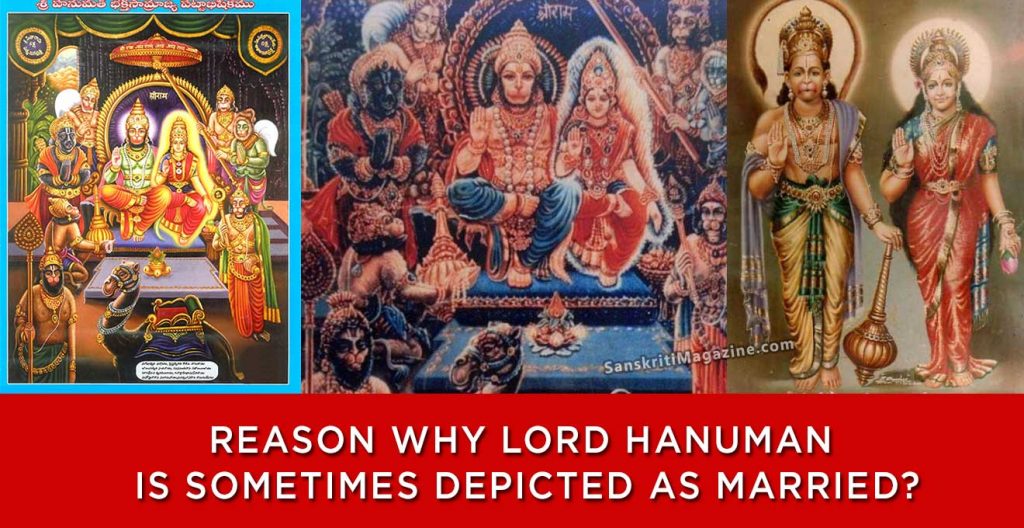The details of this celestial event are found in the manuscript written by Parasara Maharishi in his book Parasra Samhita. Sri Parasara Maharishi had written the life history of Lord Hanuman from his birth and goes on to depict his life even after the Ramayana.
According to Parasara Maharishi, Hanuman had worshipped Surya Bhagwan (the Sun god) as his Guru and studied the Vedas and mastered the Nine Vyakarnas. Being an Aajanma Brahmachari, Lord Hanuman was not eligible to study the Nava Vyakarnas (nine grammers) for which the status of being a grihastha (married man) was essential.
In order to facilitate the completion of his education, the Trimurtis approached Surya Bhagavan and created a beautiful Kanya, Suvarchala Devi, an Aajanma Brahmacharini, from the Sun’s Kiranas (rays) and arranged a marriage with Hanumanji to make him a Grihastha without Brahmacharya being affected. Whereby he learnt and became a genius in the nine vyakaranas (sanskrit grammar). These details can be found in Parasara Samhita.
There is also a sloka called ‘Hanuman Mangalashtakam’ depicts the Lord thus and runs as follows:
suvarchalaa kalathraaya chaturbhuja dharaaya cha
ushtraa roodhaya veeraya mangalam sri hanumathe
The meaning of the above sloka is: “Salutations to Lord Hanuman, having four arms, accompanied by His consort Suvarchala Devi, seated on a camel and exhibiting extraordinary valour.”
The text further describes Suvarchala as the daughter of Sun-God, Surya, from whom Anjaneya learnt the Vedas.
At the temple at Thailavaram, the moolavar is eight feet tall. The Lord holds the customary mace in his hand that he rests on his right shoulder. His left hand is placed on his hip. The utsava moorthi of Anjaneya is with his consort Suvarchala Devi. The Lord is depicted with four arms and is descriptively called Suvarchala Devi Sametha Chaturbhuja.











